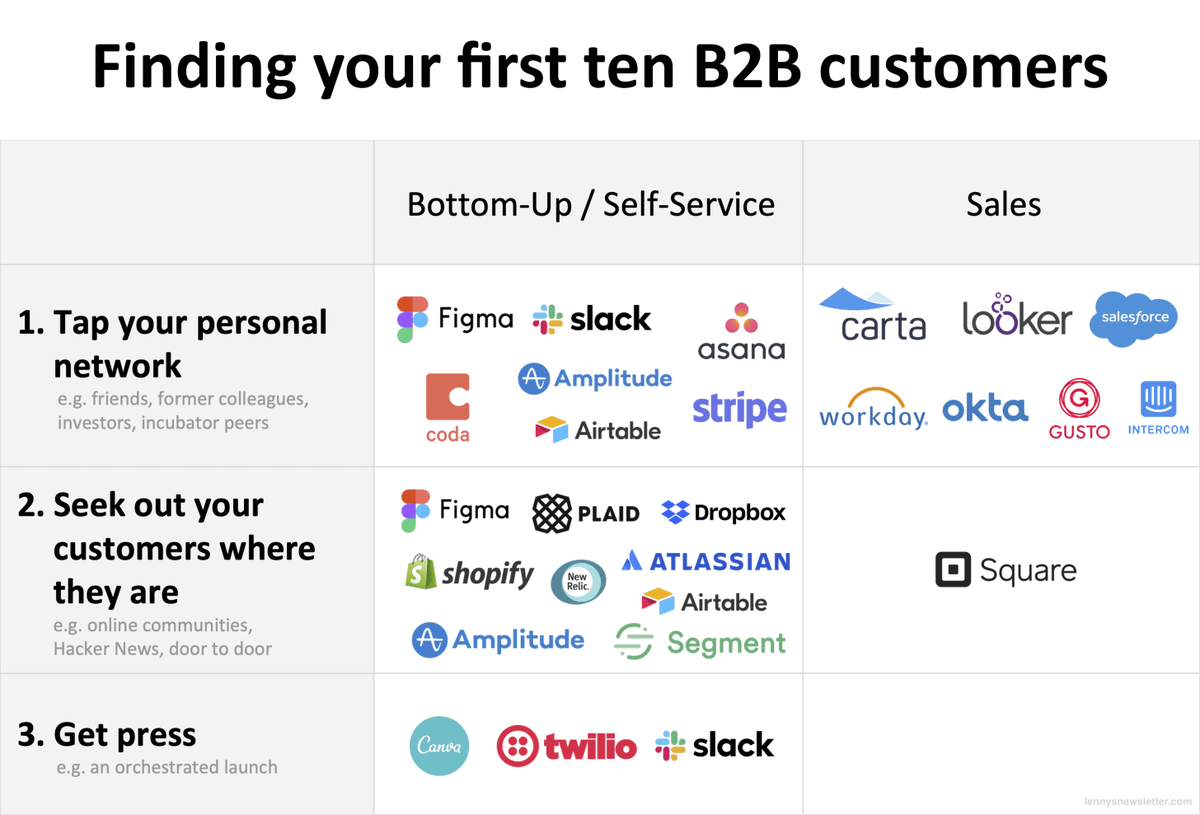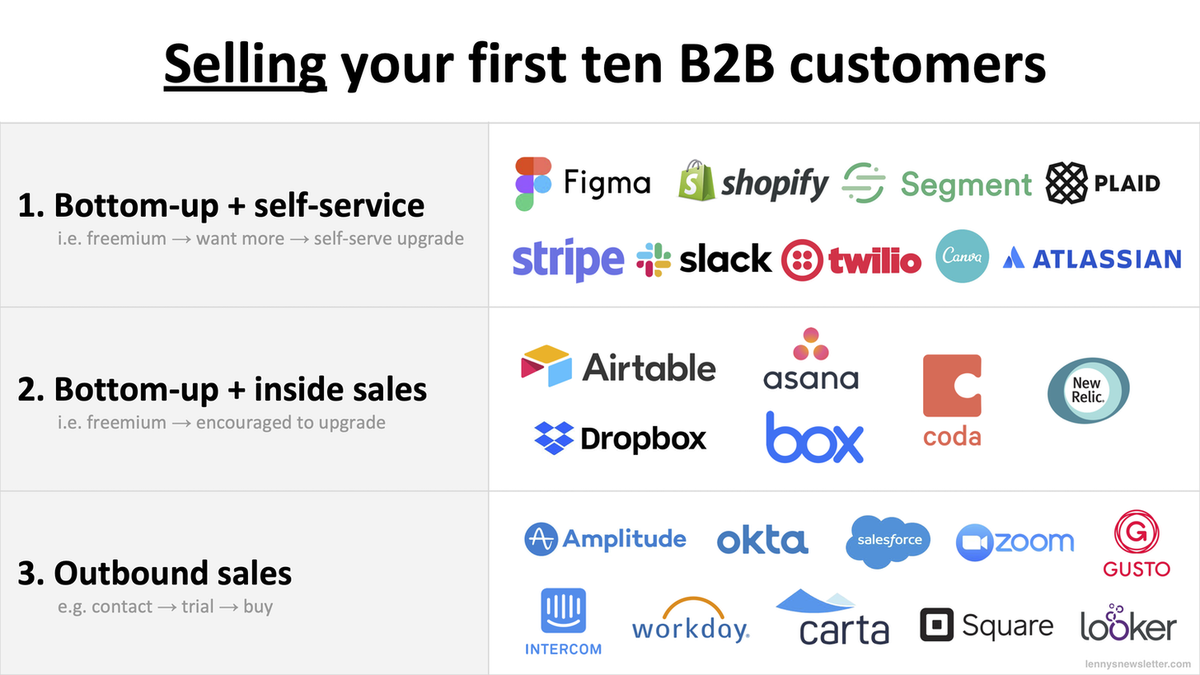A thread of my biggest surprises and takeaways from researching successful early B2B growth strategy
Read on https://abs.twimg.com/emoji/v2/... draggable="false" alt="👇" title="Rückhand Zeigefinger nach unten" aria-label="Emoji: Rückhand Zeigefinger nach unten">
https://abs.twimg.com/emoji/v2/... draggable="false" alt="👇" title="Rückhand Zeigefinger nach unten" aria-label="Emoji: Rückhand Zeigefinger nach unten">
Read on
1/ There are only three common ways B2B companies acquire their first ~10 customers:
a. Tapping their personal network, e.g. @GustoHQ
b. Press, e.g. @canva
c. Heading to the places their potential customer are already spending time, e.g. @Atlassian and open-source communities
a. Tapping their personal network, e.g. @GustoHQ
b. Press, e.g. @canva
c. Heading to the places their potential customer are already spending time, e.g. @Atlassian and open-source communities
2/ EVERY B2B company ends up building a sales team –– even if they started bottom-up. This includes @Atlassian, @SlackHQ, @Dropbox, @segment, @twilio, etc.
3/ Most companies kick-started growth with founder-led sales, e.g. "In the early days of Figma, we talked with practically every designer we knew ... I cold emailed / found introductions to many of these people and showed them Figma." – @zoink
4/ If you’re starting bottom-up, you don’t need to launch with a paid plan. 7 of the 25 companies I looked at (including @Dropbox, @figmadesign, and @airtable) had no paid plans when they launched. They acquired free users while working with their power-users to figure out paid.
5/ You can adjust your sales approach down the road — @zoom_us and @Amplitude_HQ started sales-driven and later became bottom-up. @box and @newrelic did the reverse.
6/ There are four options for charging B2B users: a flat monthly fee, a per-seat monthly fee, a usage-based fee, or a transaction fee. The majority of the companies I looked at charge a monthly per-seat fee, and sometimes include multiple changes (e.g. per-seat + monthly fee).
7/ Nearly every company offers a free option from the outset — usually a freemium tier, and occasionally a trial period.
8/ And finally, few recommended reads/listens for more on this topic
https://a16z.com/2017/06/09/distribution-model-sales-channels/">https://a16z.com/2017/06/0... by @bhorowitz
https://podcasts.apple.com/us/podcast/village-globals-venture-stories/id1316769266?i=1000477915899">https://podcasts.apple.com/us/podcas... by @YasminRazavi
https://podcasts.apple.com/us/podcast/a-clinic-on-all-things-sales-with-peter-kazanjy/id1316769266?i=1000477549410">https://podcasts.apple.com/us/podcas... by @Kazanjy
https://wfh.substack.com/p/how-david-sacks-built-the-first-bottom">https://wfh.substack.com/p/how-dav... by @briannekimmel
https://medium.com/craft-ventures/the-cadence-how-to-operate-a-saas-startup-436aa8099e8">https://medium.com/craft-ven... by @DavidSacks
https://a16z.com/2017/06/09/distribution-model-sales-channels/">https://a16z.com/2017/06/0... by @bhorowitz
https://podcasts.apple.com/us/podcast/village-globals-venture-stories/id1316769266?i=1000477915899">https://podcasts.apple.com/us/podcas... by @YasminRazavi
https://podcasts.apple.com/us/podcast/a-clinic-on-all-things-sales-with-peter-kazanjy/id1316769266?i=1000477549410">https://podcasts.apple.com/us/podcas... by @Kazanjy
https://wfh.substack.com/p/how-david-sacks-built-the-first-bottom">https://wfh.substack.com/p/how-dav... by @briannekimmel
https://medium.com/craft-ventures/the-cadence-how-to-operate-a-saas-startup-436aa8099e8">https://medium.com/craft-ven... by @DavidSacks

 Read on Twitter
Read on Twitter



